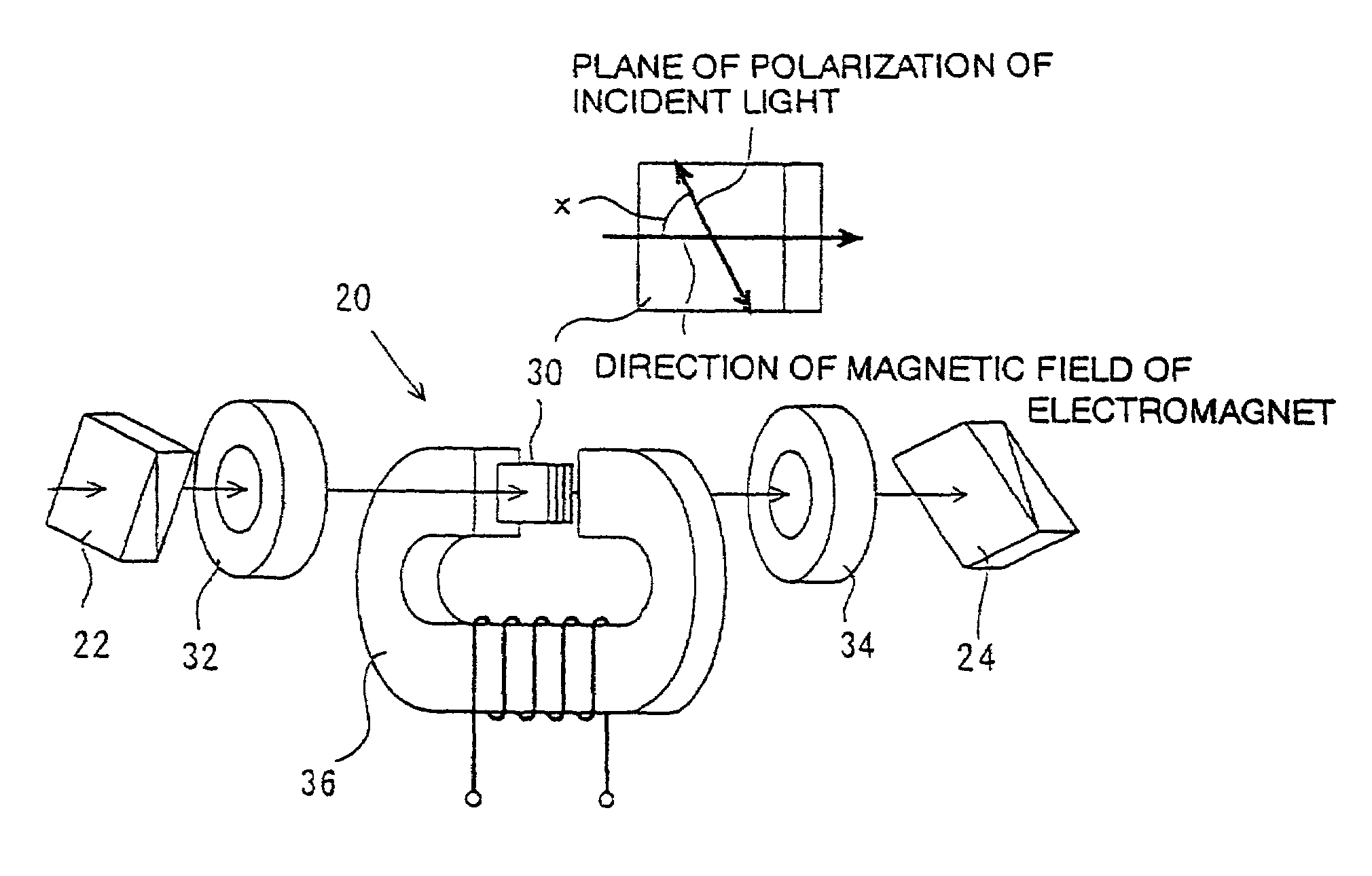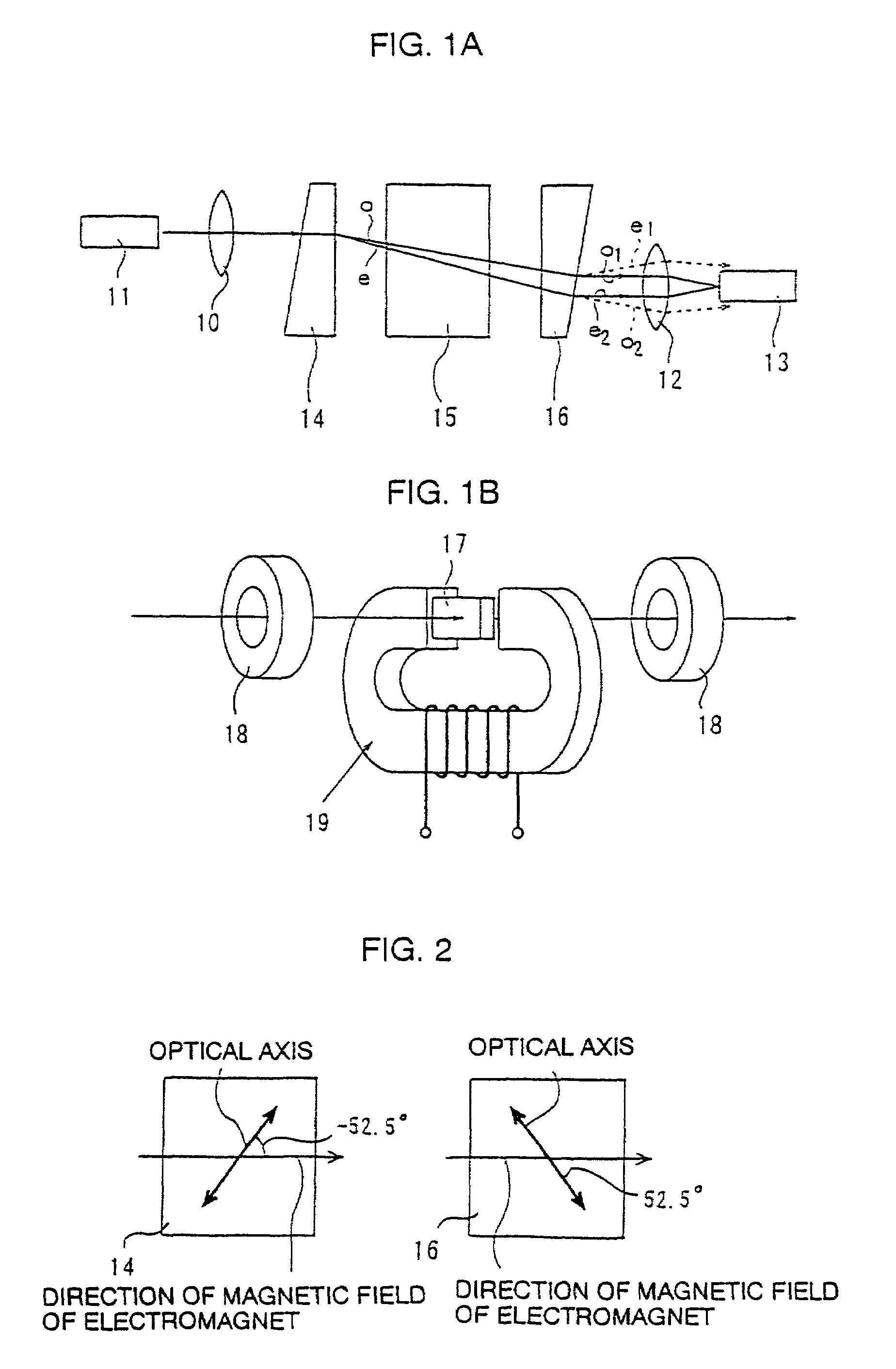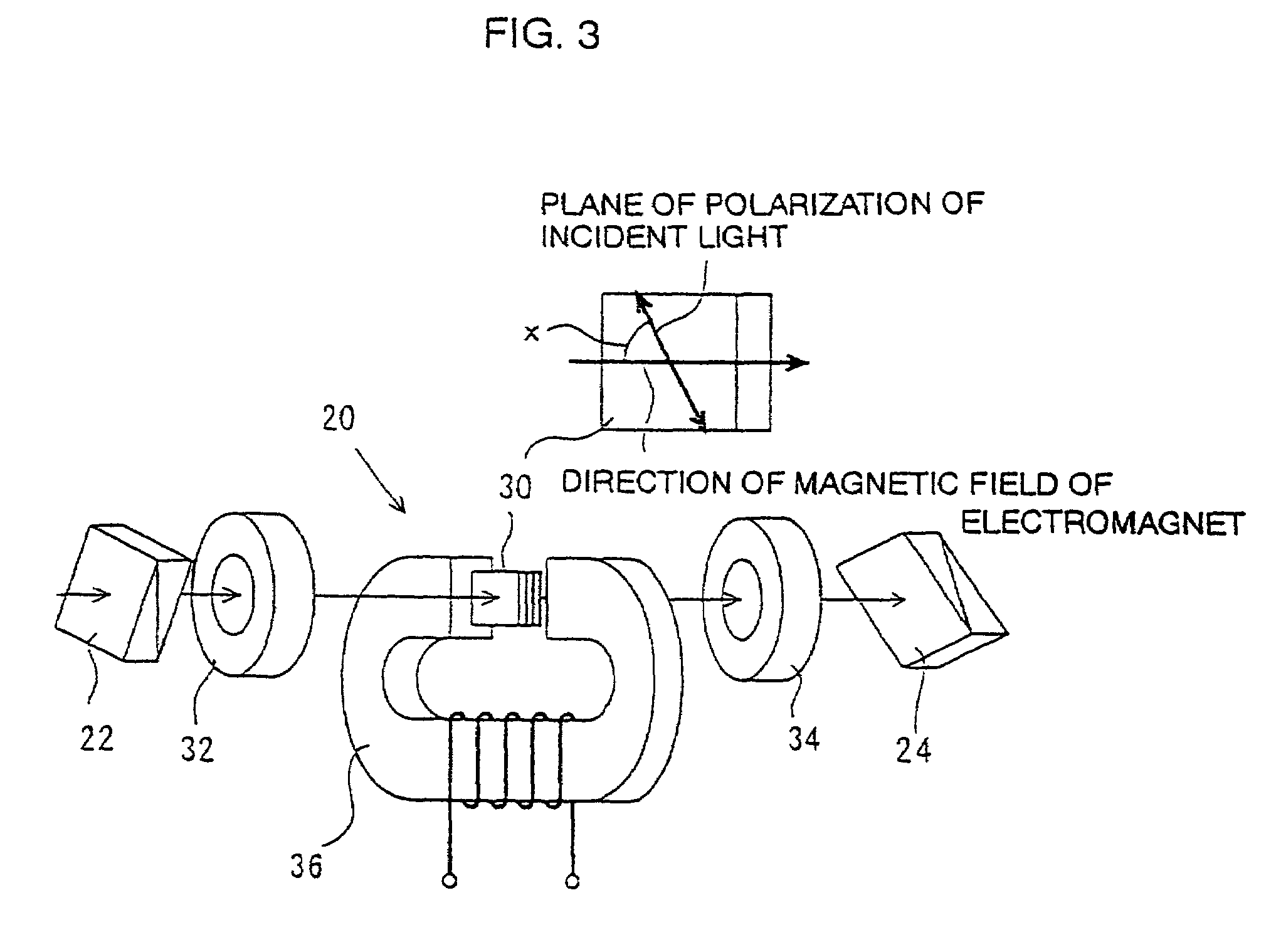Optical attenuator
a technology of optical attenuator and polarising element, which is applied in the field of optical attenuator, can solve the problems of too small dynamic range, too large dependence of dynamic range, and the amount of optical attenuation that can be changed
- Summary
- Abstract
- Description
- Claims
- Application Information
AI Technical Summary
Benefits of technology
Problems solved by technology
Method used
Image
Examples
embodiments
Embodiment 1
[0039]A system shown in FIG. 3 was manufactured, and the relation among the extinction ratio of the garnet single crystal and the angle x (an angle formed between the plane of polarization of light passed through the polarizer, in other words, the plane of polarization at the entry position of the garnet single crystal and the magnetic field direction of the electromagnet) and angle z (the rotational angle of the plane of polarization when light passes through the garnet single crystal) were studied. The angle z was allowed to vary by changing of the magnetic field to be applied by the electromagnet, and the angle x was allowed to vary by turning of the polarizer (compound polarizing prism). For information, the magnetic field intensity of the permanent magnet is 16.6 kA / m.
[0040]First, the garnet single crystal was manufactured as follows: With PbO—B2O3—Bi2O3 as a solvent, by the LPE method, on the face (111) of a non-magnetic garnet substrate 40, with grating constant b...
embodiment 2
[0048]The present invention can be applied to a polarization non-dependent optical attenuator as shown in FIG. 1. A measurement system was manufactured, with a wedge type birefringent crystal (here, a rutile crystal) used for the polarizer and the analyzer in the measurement system shown in FIG. 3. External magnetic field to be applied to the garnet single crystal comprises two directions, a fixed magnetic field (16.6 kA / m) by the permanent magnet in a parallel direction to the light beam direction, and a variable magnetic field by the electromagnet in a direction intersecting at right angles. FIG. 12 shows the polarizer and analyzer, viewed from the traveling direction of light. A wedge-type birefringent crystal which functions as a polarizer 14 is set, so that an angle x formed between the applying magnetic field direction by the electromagnet to be applied in a direction intersecting the optical axis at right angles and the optical axis becomes −7.5 degrees. When viewed from the ...
PUM
 Login to View More
Login to View More Abstract
Description
Claims
Application Information
 Login to View More
Login to View More - R&D
- Intellectual Property
- Life Sciences
- Materials
- Tech Scout
- Unparalleled Data Quality
- Higher Quality Content
- 60% Fewer Hallucinations
Browse by: Latest US Patents, China's latest patents, Technical Efficacy Thesaurus, Application Domain, Technology Topic, Popular Technical Reports.
© 2025 PatSnap. All rights reserved.Legal|Privacy policy|Modern Slavery Act Transparency Statement|Sitemap|About US| Contact US: help@patsnap.com



